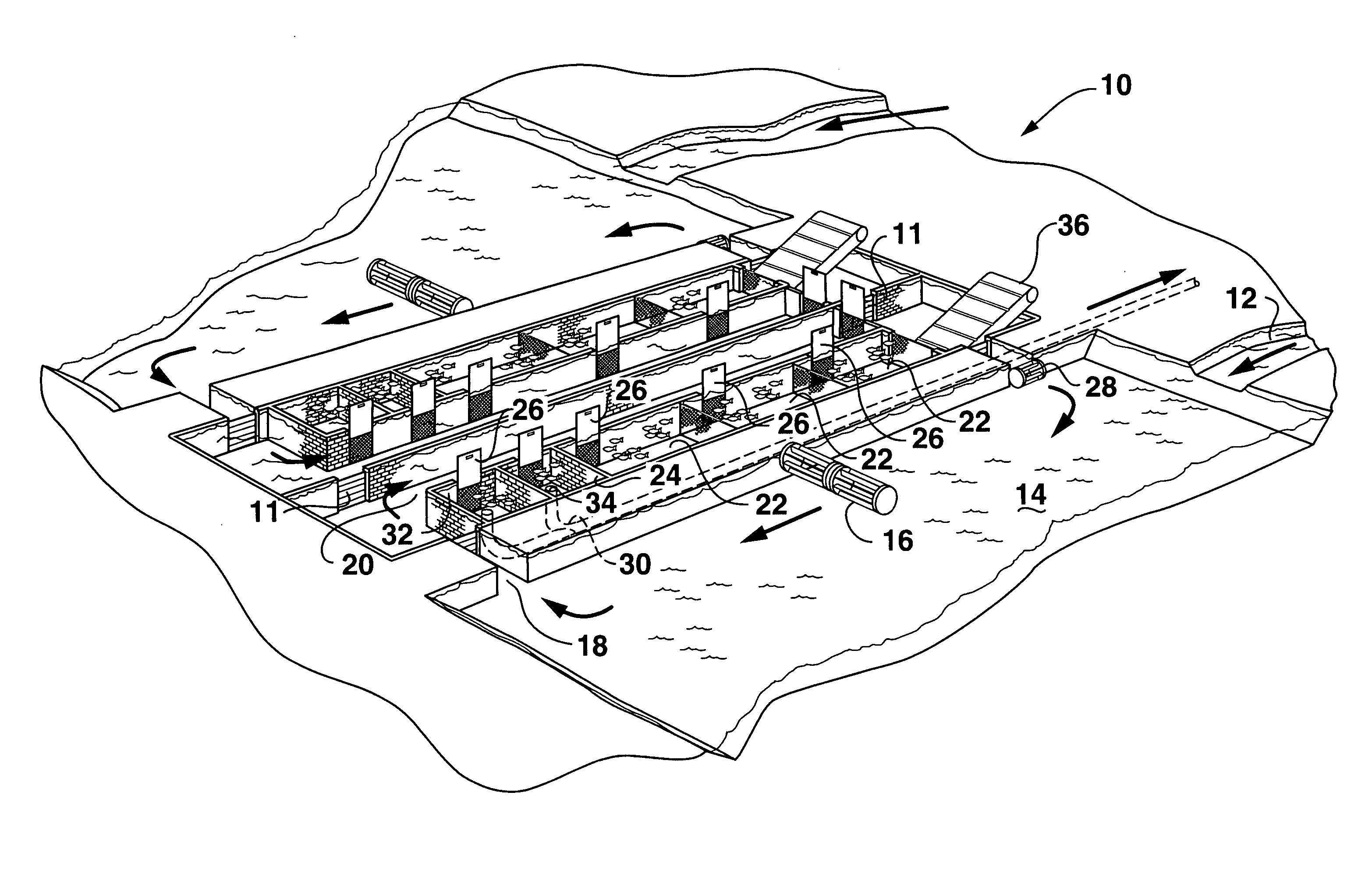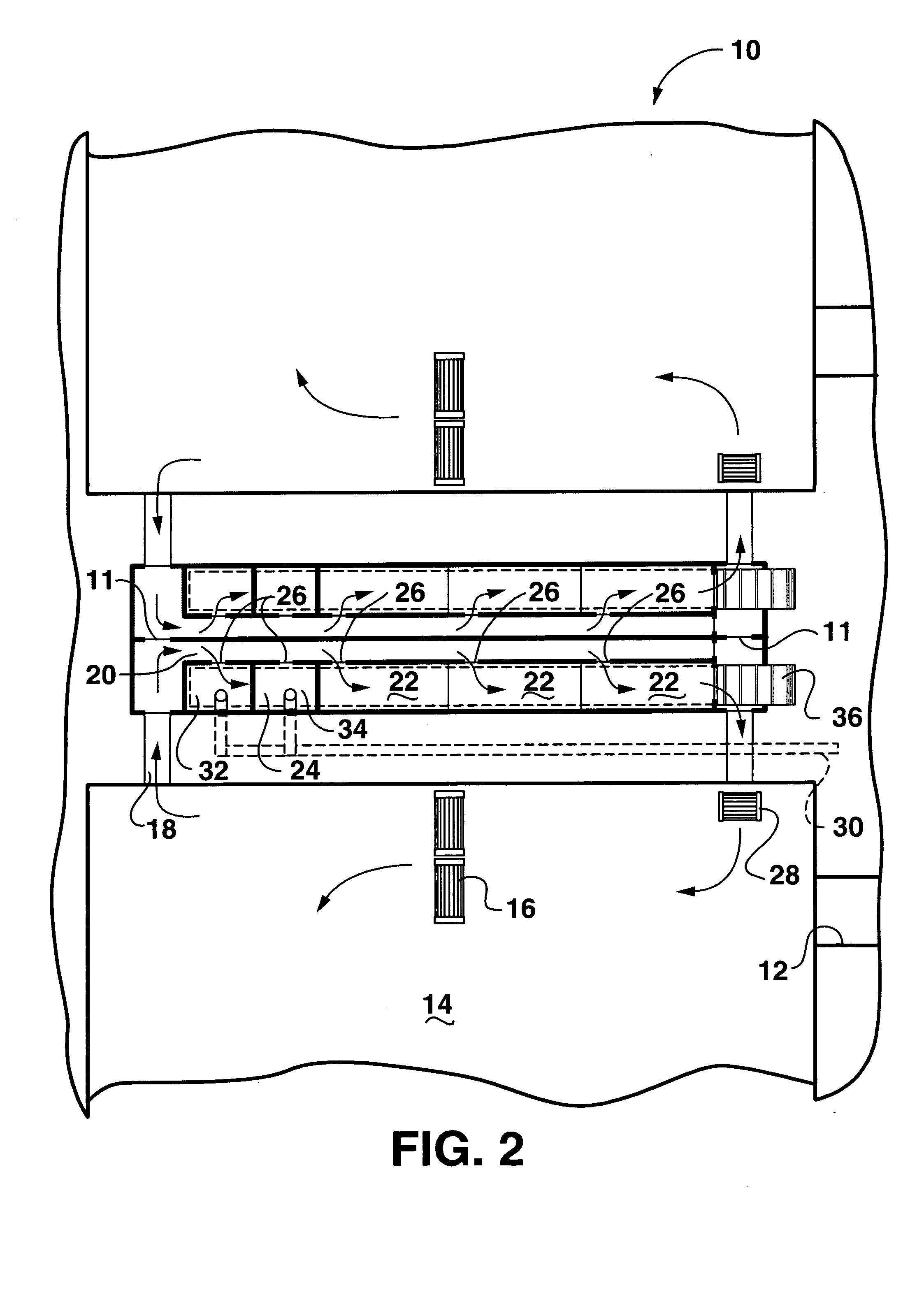Controlled eutrophication system and process
a technology of eutrophication system and control system, applied in biological water/sewage treatment, water cleaning, multi-stage water/sewage treatment, etc., can solve the problems of runoff water pollution, water quality issues in adjacent runoff areas, chemical treatment of wastewater, etc., to increase algal productivities, reduce feed inputs, and increase fish output
- Summary
- Abstract
- Description
- Claims
- Application Information
AI Technical Summary
Benefits of technology
Problems solved by technology
Method used
Image
Examples
example no.1
EXAMPLE NO. 1
[0074] The following example is provided for demonstrating the digestability and methane yield of algal biomass obtained from aquatic organisms.
[0075] The experiments were carried out in four-liter plexiglass digesters loaded with Spirulina. The digesters were maintained at 35±2° C. in a water bath. PH was maintained in the 6.5 to 7.2 range by feeding 5N NaOH solution as needed. All data was collected after operating the digester at 5 hydraulic detention times to assure steady state performance of the digester.
[0076] The cyanobacteria Spirulina used in the control studies was obtained as a dry powder. The algae biomass was harvested using FeCl3 and FeSO4 as the flocculation agent.
[0077] Total solids, volatile solids and total organic acid analyses were performed in accordance using Standard Methods. The methane content of gas was measured by gas chromatography with TCD with a column temperature at 45° C., using argon as the carrier gas. Total organic carbon, inorgani...
PUM
 Login to View More
Login to View More Abstract
Description
Claims
Application Information
 Login to View More
Login to View More - R&D
- Intellectual Property
- Life Sciences
- Materials
- Tech Scout
- Unparalleled Data Quality
- Higher Quality Content
- 60% Fewer Hallucinations
Browse by: Latest US Patents, China's latest patents, Technical Efficacy Thesaurus, Application Domain, Technology Topic, Popular Technical Reports.
© 2025 PatSnap. All rights reserved.Legal|Privacy policy|Modern Slavery Act Transparency Statement|Sitemap|About US| Contact US: help@patsnap.com



